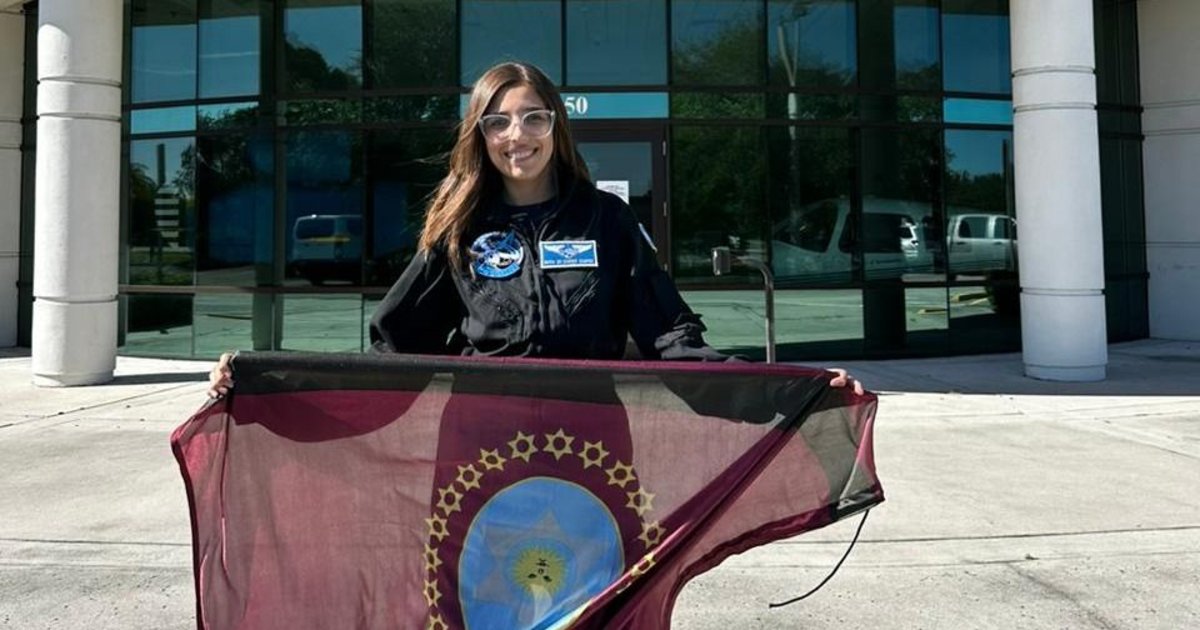Curiosity, passions, adventure, beyond the known, science. A person may have many motivations to go into space, but understanding them can be as complex as wanting to express the meaning of life. It was simple for Noel de Castro. He always dreamed of becoming an astronaut.
A 26-year-old woman from Salta didn't just stop with that wish, she embarked on the path to make it come true. He is studying to be a biostronatist at NASA. What's more, he is the first Argentine in that race to rely on the US space agency.
The young woman graduated as a biomedical engineer from Favaloro University of Buenos Aires last year and immediately began a search to pursue her career with space-related topics.
Thus he arrived at the Florida Institute of Technology in Melbourne (north of Miami), where he studied management, and this year began a career related to his specialty in the space science department of NASA. . The same city is home to the Kennedy Space Center, where rockets and space shuttles are launched.
“I look at the sky, and the truth is, I'm interested to know more, to know more, to understand what's going on there, to understand how humans can get there,” Melbourne-based Noel said in a telephone conversation with El Tribuno.
Procedures for space
A few days before Noel contacted this newspaper, he was training in a space flight simulator. It was a hypoxia test where they took her to a low oxygen concentration so that she could recognize the physiological signs of that situation.
“The idea of this exercise is to understand the body and see what symptoms appear when you are in a moment of hypoxia. Your oxygen starts to decrease, and at the same time you have to operate the flight simulator following the instructions of the control tower,” he explained.
He recalls seeing fewer colors, feeling hot and having less panoramic vision, among other effects.
He is meticulously studying the area of human physiology in space and all the equipment astronauts need to travel and return.
“In general, the human physiology is not the same in microgravity, and actually one of the biggest problems is the cardiovascular area and what I can do as a biomedical engineer, for example, is the monitoring area, to see how the body works in microgravity. It will help to face everything that the body suffers when astronauts return from space. Start making medical equipment,” explained Noel.
The specialization lasts a year and requires a thesis, but his concern does not stop there: in parallel he begins training as an airline pilot to coordinate his path towards space.
“My ultimate goal is to be an astronaut,” asserted the engineer.
By the middle of this year, he also plans to start his Masters in Spatial Science at the same institute.
Space biology is one of the ways to go to space. You can pursue a career at the same Florida institution, for example, in aerospace engineering. Another aspect could be space chemistry studies, to name just a few of the many training courses offered at the Florida Research Center.
A different world
According to the Florida Institute of Technology's official website, the study of space science life at the site has been in place since before man first set foot on the moon in 1969. “A standard established since 1958, successfully preparing students for high-tech careers at leading space agencies, research institutes and government agencies,” they state on the page.
“The master's program in space science covers a wide range of space-related fields, including stellar and exoplanetary astrophysics, cosmology and the origin and evolution of the universe, sun-Earth interaction, cosmic rays, and the physics of exoplanets,” they note. .
US faculty members are active researchers in three major areas: geophysics, astrophysics/astrophysics, and planetary science. Among other benefits, students in the space science master's program have access to the Olin Physical Sciences Center, home to the largest research telescope in the state of Florida.

